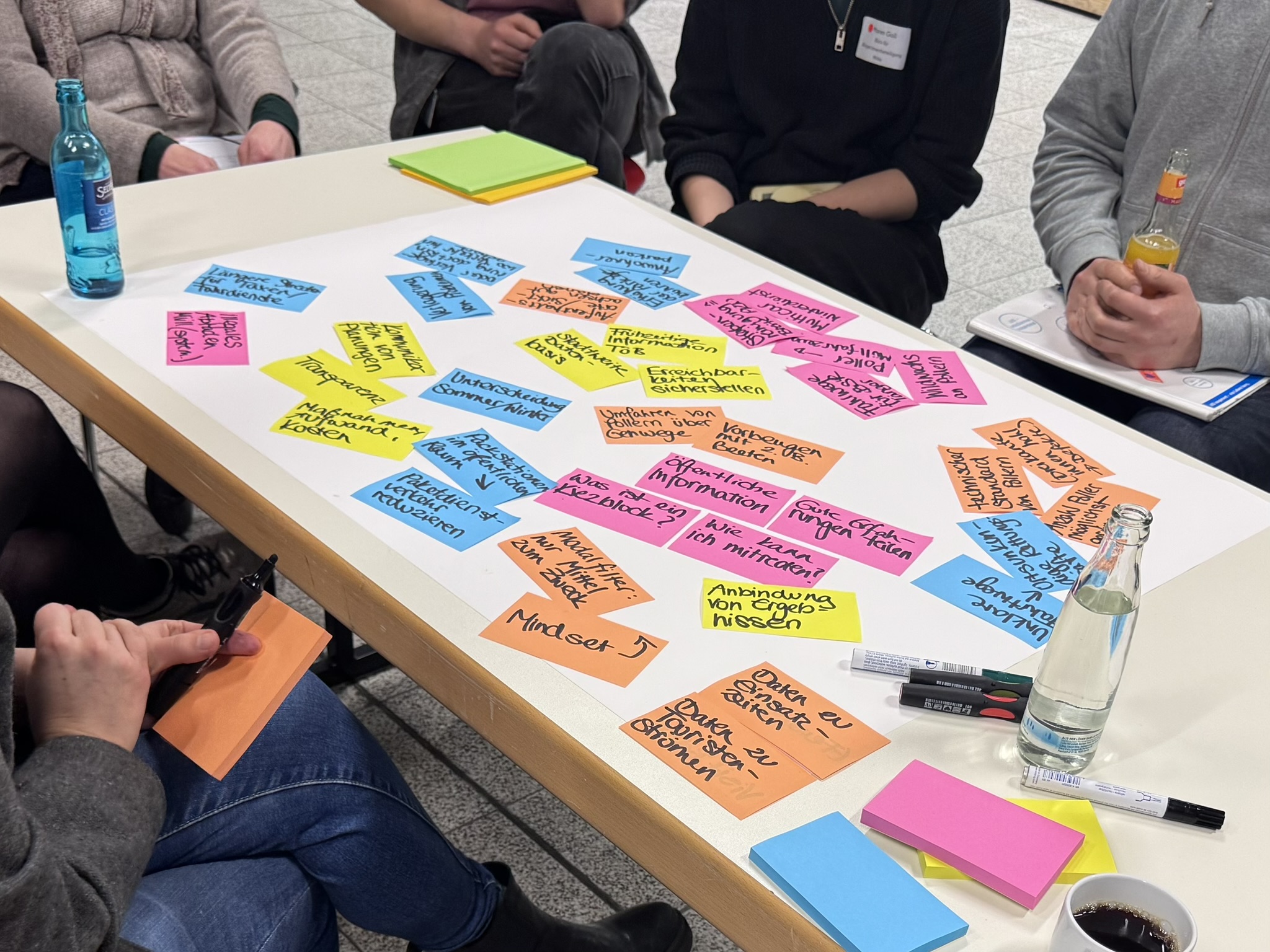On February 26, the ideas workshop for public representatives for the Kiezblocks für Mitte took place. The focus was on involving key public stakeholders in the development of Kiezblocks at an early stage. Invited people from various institutions, such as the fire department, police and public order office, gathered in the Stadtwerkstatt. Also present were representatives of the Office for Citizen Participation Mitte, the Disability Advisory Council Mitte and others.
The participants spend a lot of time on the streets for work or represent population groups with special needs in public spaces. The aim was to provide information about the project and to work out together which measures could make everyday life easier or possibly more difficult.
After a welcoming address, district councillor Christopher Schriner and project manager Laura Fritsche from the Mitte Roads and Green Spaces Office informed those present about the project. In the main part of the event, participants were able to discuss three topics in small groups during an interactive phase. Ideas, visions, expert knowledge and experiences on the following issues were exchanged, discussed and recorded.
- What can serve as a model for Kiezblocks in Mitte? What good examples can we learn from?
Best practice examples and good experiences with Kiezblocks/ traffic calming measures were exchanged here - When is a Kiezblock a good Kiezblock? How would you rate the success of an Kiezblock project? How can the public space benefit from a Kiezblock?
Expectations regarding Kiezblocks, functionality and specific needs in public spaces (e.g. bollards, turning radii) were discussed here - What can we do better? What needs to be prevented? What could go wrong?
Here, the participants discussed their bad experiences with Kiezblocks/ traffic-calming measures in their everyday (professional) lives and their reservations about them

Examples from international cities such as Paris (reduced traffic areas through unsealing and trees), Vienna/Munich (temporary experimental spaces) or New York City/Italian old towns (access restriction) were presented. It was also noted that the participation of residents strengthens their identification with Kiez and can therefore prevent littering and vandalism. It was also jointly noted that communication and participation should be improved when developing Kiezblock concepts. And also that flexible solutions such as seasonal Kiezblocks could be useful.
All citizens can get involved in an initial online participation until April 7, 2025.
The results are incorporated into further planning.
